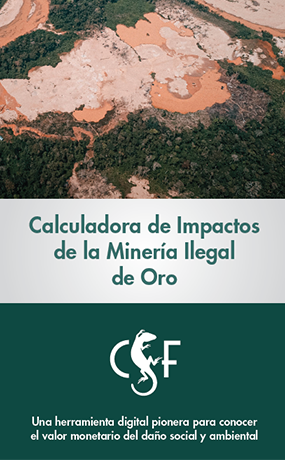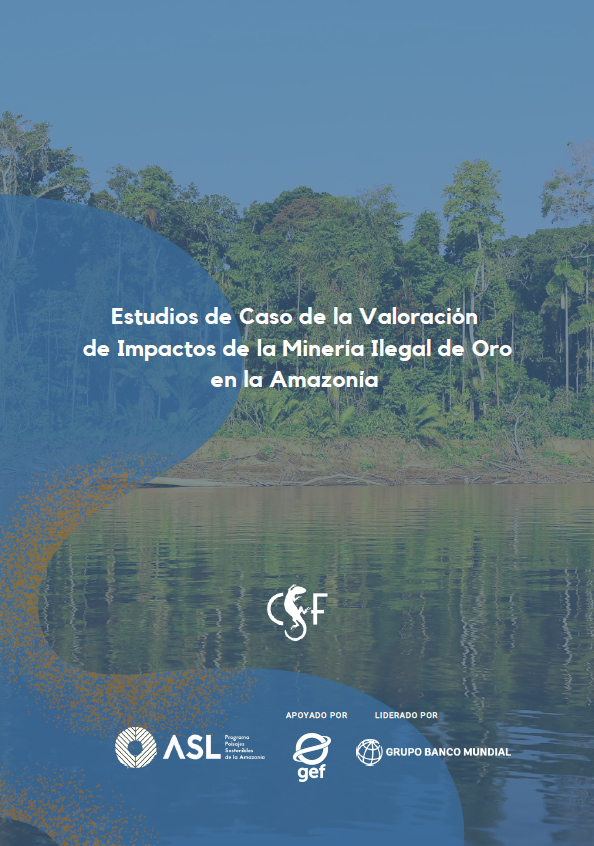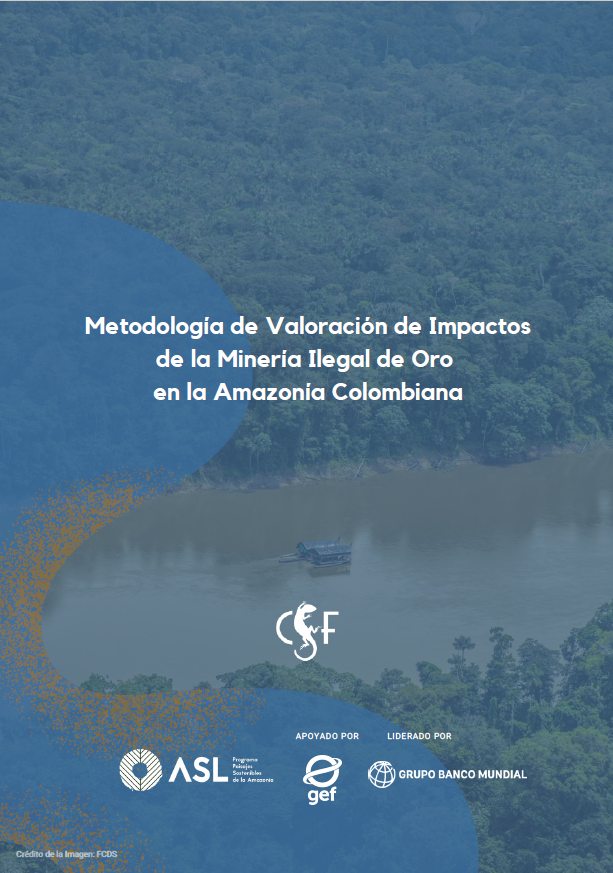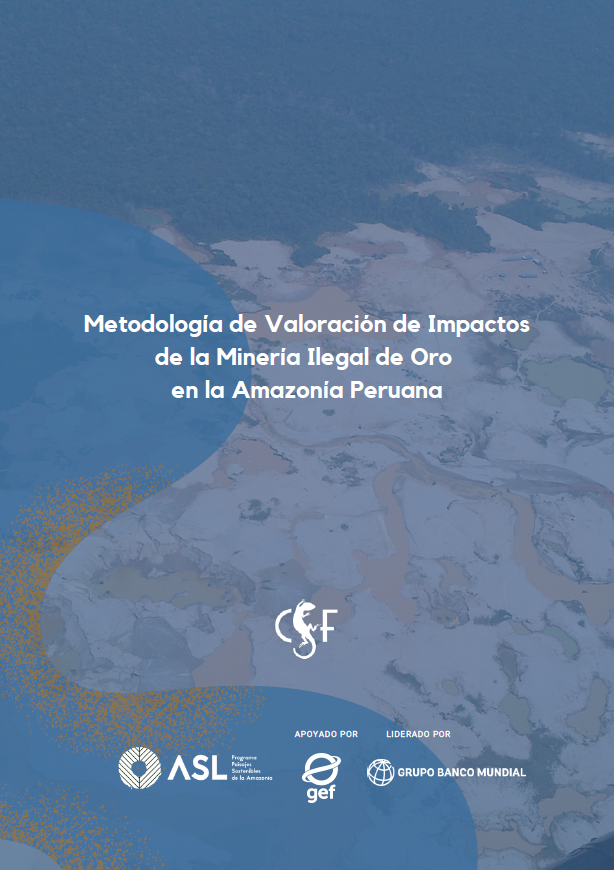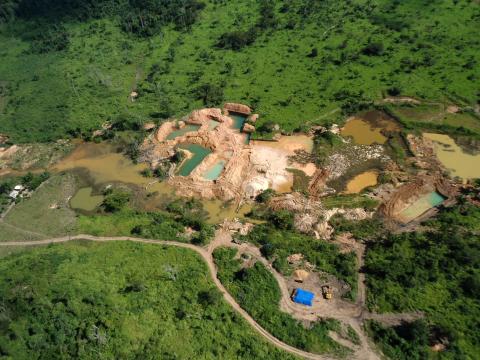CSF’s Mining Impacts Calculator estimates the economic and social impacts of illegal mining in Peru, Colombia and Brazil
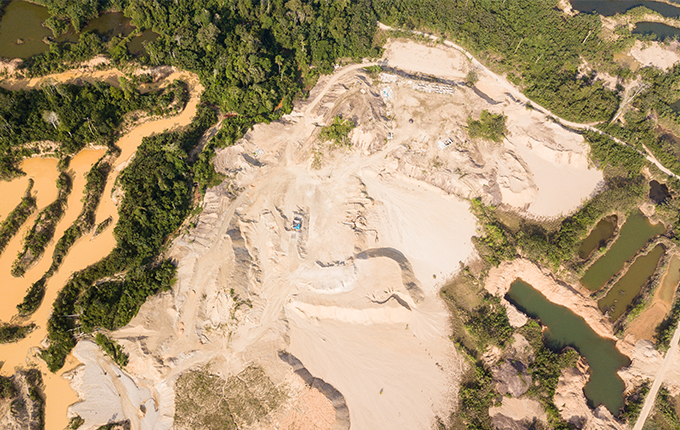
- Conservation Strategy Fund (CSF) has developed a tool to estimate the economic impact of illegal gold mining in Brazil, Colombia and Peru.
- According to our study, it is estimated that between 2020 and 2022, the economic impact of illegal gold mining along the borders of Peru, Colombia and Brazil was between US$20 million and US$62 million including the monetary estimates of damages in environmental and human health.
Protecting the Amazon
Illegal gold mining is one of the main threats to the human and environmental health of Amazonian countries. To more effectively defend the Amazon communities against this threat, and to preserve the natural wealth of our forests, the integrity of the people who defend their territories, and the health of the populations near the mining sites, Conservation Strategy Fund (CSF) has designed an interactive web tool: the Mining Impacts Calculator. This tool can estimate the impact in monetary terms of the damage caused by illegal gold mining.
Origin of the Mining Impacts Calculator
The Mining Impacts Calculator (Calculadora de Impactos do Garimpo) is the result of a partnership between CSF and the Brazilian Federal Public Prosecutor's Office (MPF). This tool allows knowing the value of the damage caused by illegal gold mining in terms of deforestation, river sedimentation and mercury pollution. The tool was launched in July 2021 and is being used by the Brazilian MPF.
Currently, the use of the calculator in Brazil has made it possible to establish fines and penalties with amounts three times higher than those previously set, thus more effectively enforcing consequences on those who harm local communities throughout the Amazon. These more judicial consequences have already discouraged illegal mining practices and promoted cleaner technologies for the gold mining sector. Versions of the Calculator are available for Peru, Colombia and Ecuador, and methodologies are being developed to expand the Calculator’s use to Guyana and Suriname as well.
You can access the publications of the Peru and Colombia methodologies, as well as the case study in Spanish.
Case Studies from the Borders of Peru, Brazil & Colombia
To demonstrate the potential of the Mining Impacts Calculator, CSF and Fundación para la Conservación y el Desarrollo Sostenible (FCDS) analyzed mining impacts on two areas located between the borders of Peru, Brazil and Colombia. This joint study, Estudios de caso de la Valoración de Impactos de la Minería Ilegal de Oro en la Amazonía, prioritized the territories of the Puré River, the department of Loreto in Peru, the department of Amazonas in Colombia and the municipalities of Santo Antônio do Içá and Tabatinga in Brazil.
The region of Amazonas (Colombia) and the municipality of Japurá (Brazil), is a polygon of 45 860 km², which also includes the Puré River National Natural Park and the Juami-Japurá Ecological Station (ESEC). Through a collaborative initiative between Maxar and the Colombian National Natural Park System, 200 000 km2 of the Puré River were monitored with high-resolution satellite imagery from June 5 to August 20, 2020 (HETTLER, 2022). Thirty illegal mining rafts were identified, 26 of them operating in the region of the Puré River National Natural Park, and 4 on the Brazilian side, near the border with Colombia.
Map 1: Study area (2020)
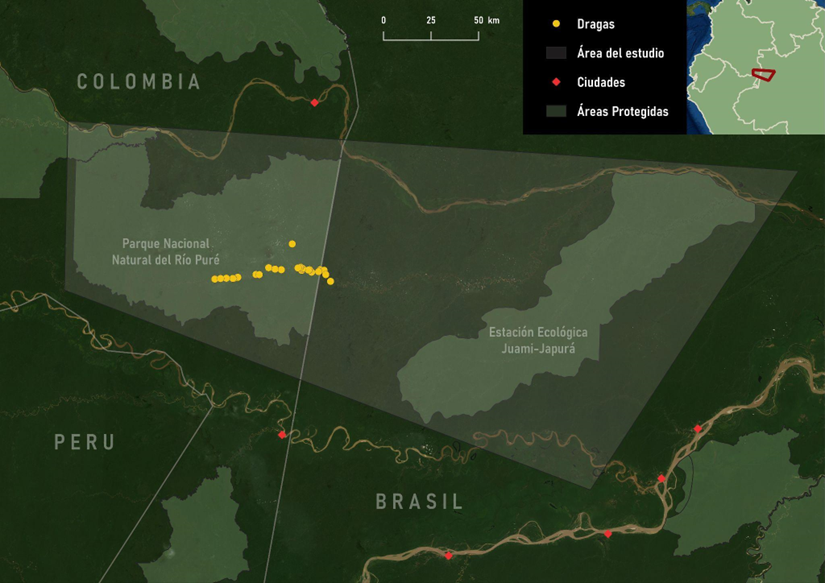
Map 2: Study Area - Scenario (2021)
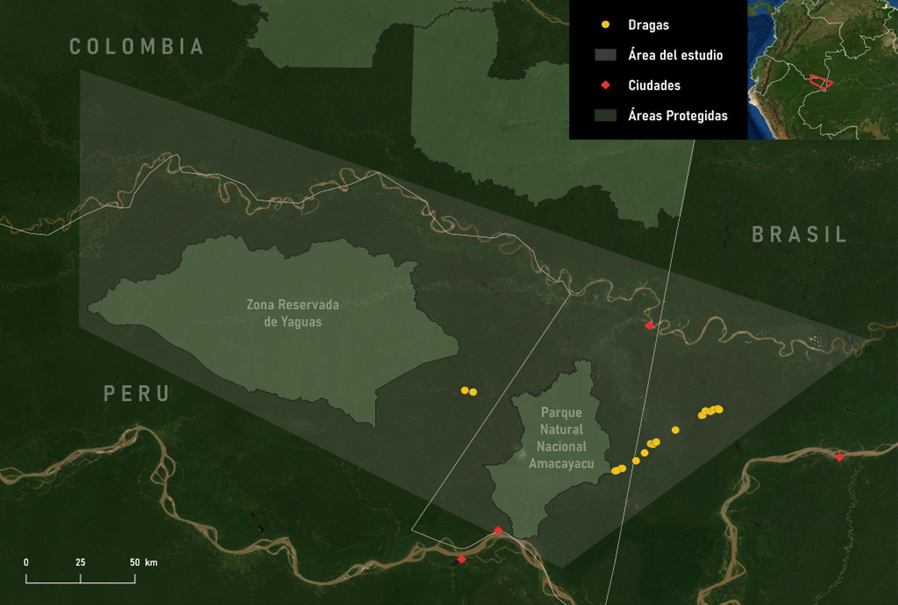
Source: Datos Abiertos ESRI y GeoGPS Peru.
Map 3: Study Area - Scenario (2022)
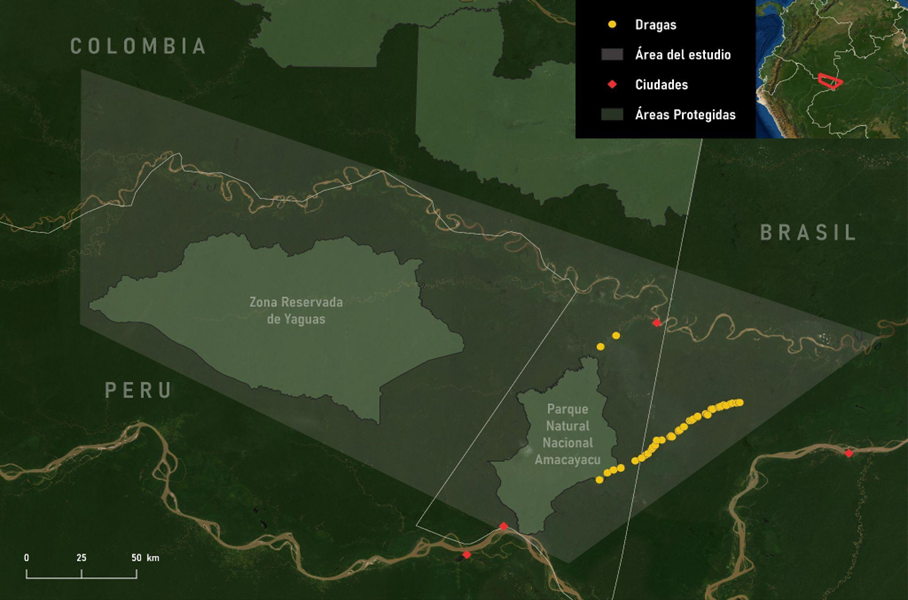
Source: Datos Abiertos ESRI y GeoGPS Peru.
In 2021 the rafting activity produced 127 kg of gold. To extract this amount of ore, an estimated 19 551 tons of sediments were displaced, this alone generated an economic impact of USD 988 914. The tool estimated the total socioeconomic impact of mining in this region to be USD 20 605 439.
According to the analysis, in 2022, the mining activity in this region produced 327 kg of gold, displacing 52,738 tons of sediments, and generating an economic impact of USD 2 356 888. The total figure for the mining activity is estimated at USD 62 668 631.
Expanding the Mining Impacts Calculator for Peru and Colombia
In 2022, with support from Amazon Sustainable Landscapes (ASL) and The World Bank Group and with funding from the Global Environment Facility (GEF), the tool was adapted to the Peruvian and Colombian contexts to improve decision-making and establish changes in the institutional framework around illegal mining.
This adaptation involved a training in Leticia (Colombia) and Lima (Peru), in September and November 2022, respectively, with the support of ASL. In addition, the assessment methodology used in the tool for Peru has been shared with officials of the Regional Government of Loreto and Madre de Dios, decentralized bodies and civil society of the aforementioned departments thanks to the support of USAID's Prevenir Project. On March 28, 2023, the new version of the tool was presented to public officials from Peru, Colombia and Brazil interested in addressing illegal gold mining in the Amazon. The hope is that the tool can be used in criminal prosecutions of illegal gold mining crimes throughout the Amazon.
In this way, the Mining Impacts Calculator creates an opportunity to integrate economic data in the argument to protect nature, to promote the use of clean technologies for gold extraction and to help establish consequences within the sector for unaccounted-for socio-environmental impacts.
- Log in to post comments

